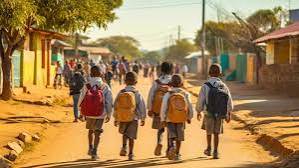Five African Countries with the Worst Educational Systems
Education is a cornerstone for any nation’s development, but in many African countries, the educational systems face significant challenges, including limited resources, political instability, and inadequate infrastructure. Despite the continent's progress in recent years, several African nations still struggle with providing quality education to their citizens. Here are five countries in Africa with some of the worst educational systems, as a result of various socio-economic and political factors.
1. Chad
Chad’s education system is one of the weakest on the continent. Despite efforts to improve, the country remains plagued by a lack of infrastructure, poorly trained teachers, and insufficient government funding for education. According to UNESCO, Chad has one of the lowest literacy rates in Africa, with only about 22% of women being literate. The school attendance rate is low, especially in rural areas, and many students are forced to attend overcrowded classrooms. Furthermore, the nation’s ongoing political instability and conflicts further disrupt educational opportunities.
2. Central African Republic (CAR)
The Central African Republic, embroiled in civil conflict for years, has one of the most underdeveloped education systems in Africa. The country faces numerous challenges, including poor infrastructure, a lack of qualified teachers, and widespread poverty. Schools are frequently attacked by armed groups, making it dangerous for students to attend. Only about 30% of children are enrolled in secondary education, and many schools lack basic facilities such as clean water, electricity, and even adequate classrooms. The lack of investment in education is compounded by an ongoing humanitarian crisis, which leaves little room for government focus on improving the sector.
3. South Sudan
South Sudan, the world’s youngest nation, has faced immense challenges since its independence in 2011. Prolonged conflicts, widespread poverty, and a lack of essential infrastructure have devastated the education system. According to the UN, nearly half of the country’s children are out of school, and those who do attend often experience poor-quality education. There is a severe shortage of schools, qualified teachers, and educational materials. Moreover, many children, especially girls, face barriers such as early marriage, which further limits their educational opportunities. South Sudan’s ongoing civil war has also caused significant disruptions to the education sector.
4. Niger
Niger, a landlocked country in West Africa, struggles with one of the highest illiteracy rates in the world. Education in Niger is severely underfunded, with many schools lacking basic facilities, including classrooms, desks, and teachers. The government’s budget allocation to education is among the lowest in the region, which directly impacts the quality of schooling available to students. In rural areas, cultural norms, poverty, and early marriages prevent many children, particularly girls, from pursuing an education. Although there have been efforts to improve the system, the lack of resources and political will continues to hold back significant progress.
5. Mali
Mali’s education system has been hindered by political instability, economic challenges, and a lack of infrastructure. The country has one of the lowest school attendance rates in West Africa, and many children, especially in rural regions, do not complete their education. Mali’s education system is characterized by overcrowded classrooms, poor teaching standards, and outdated curricula. The security situation, particularly in the northern regions, has caused the closure of many schools and disrupted the education of thousands of children. Furthermore, there is a notable gender disparity, with girls often facing additional cultural and social barriers that limit their access to education.
Conclusion
While there is no one-size-fits-all solution to the educational challenges in these countries, addressing issues such as political instability, inadequate funding, and cultural barriers will be essential for improving education across Africa. International organizations, governments, and local communities must work together to create sustainable solutions that will provide children in these countries with the opportunities they need to succeed. Until then, the educational systems in these nations will continue to face significant obstacles that hinder both individual and national development.


